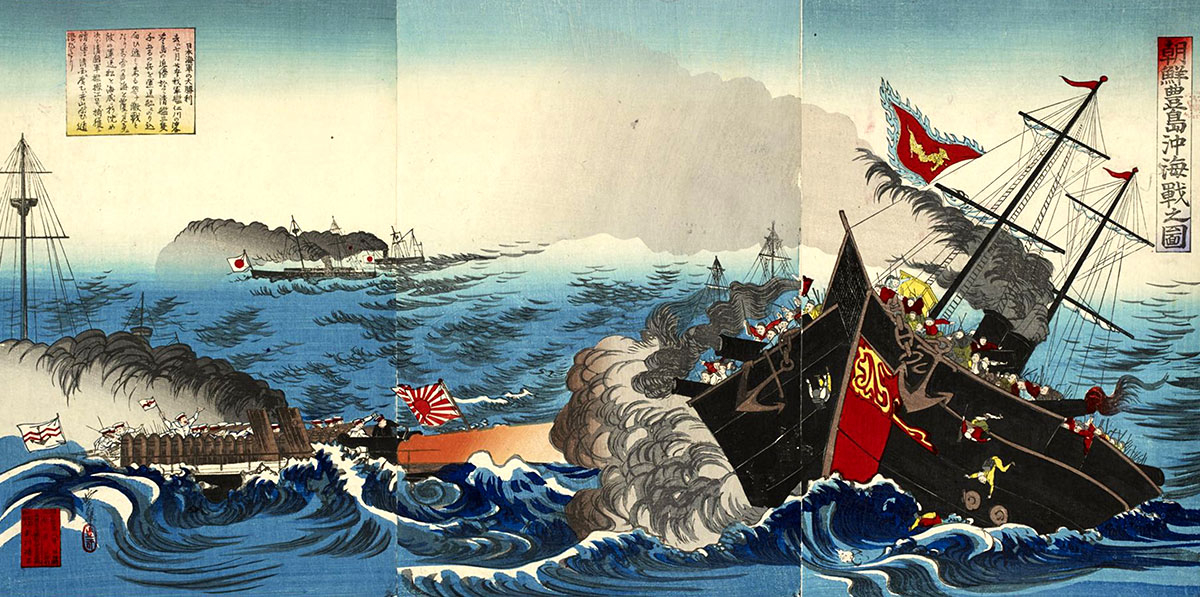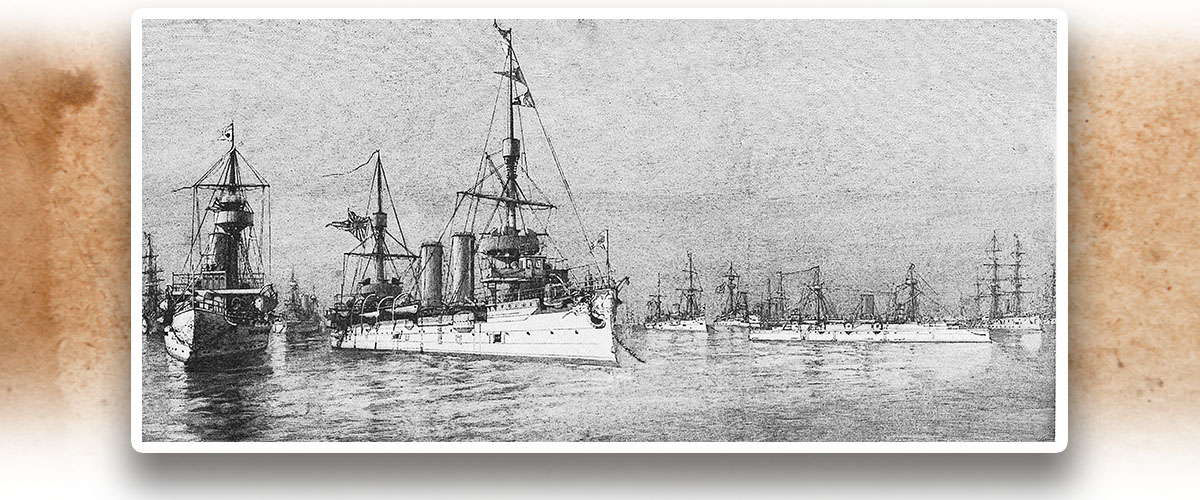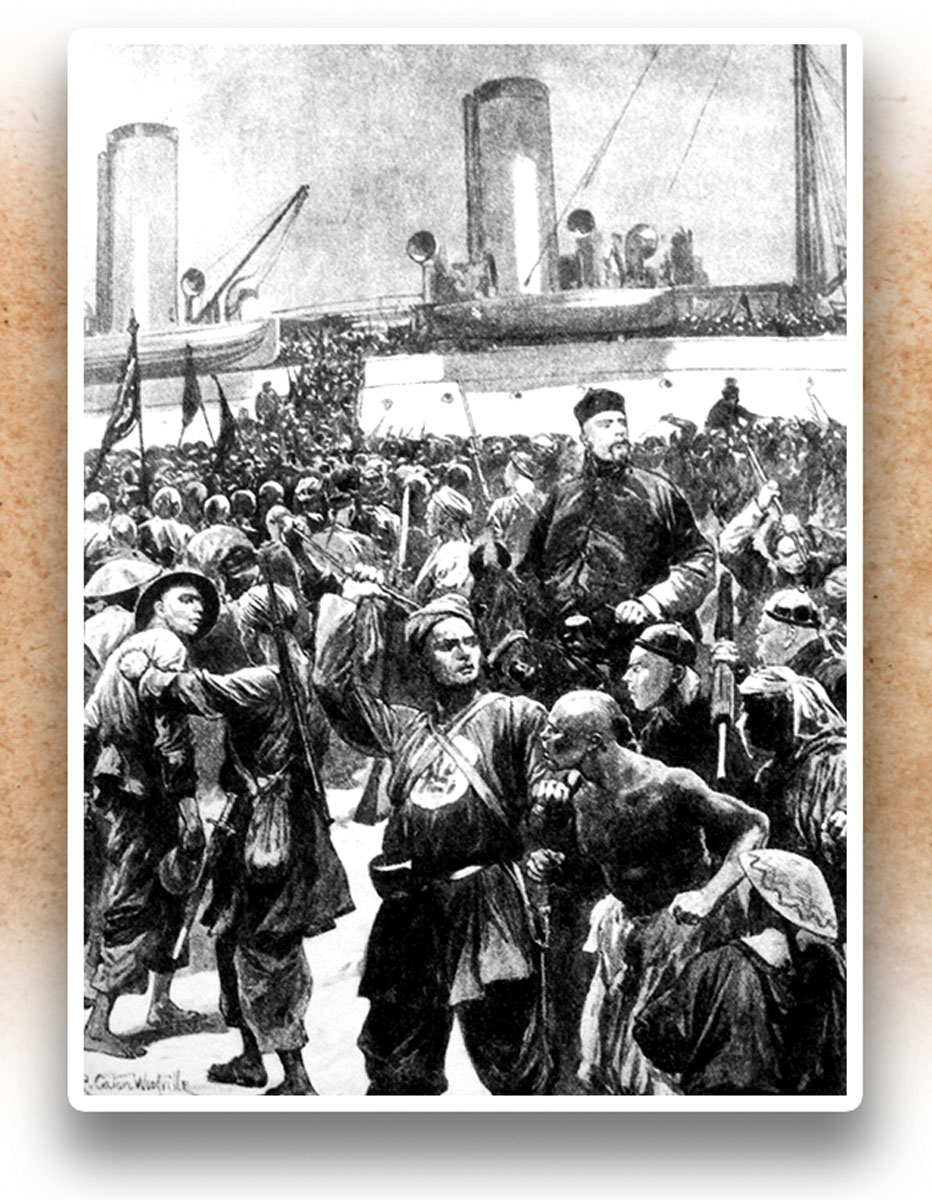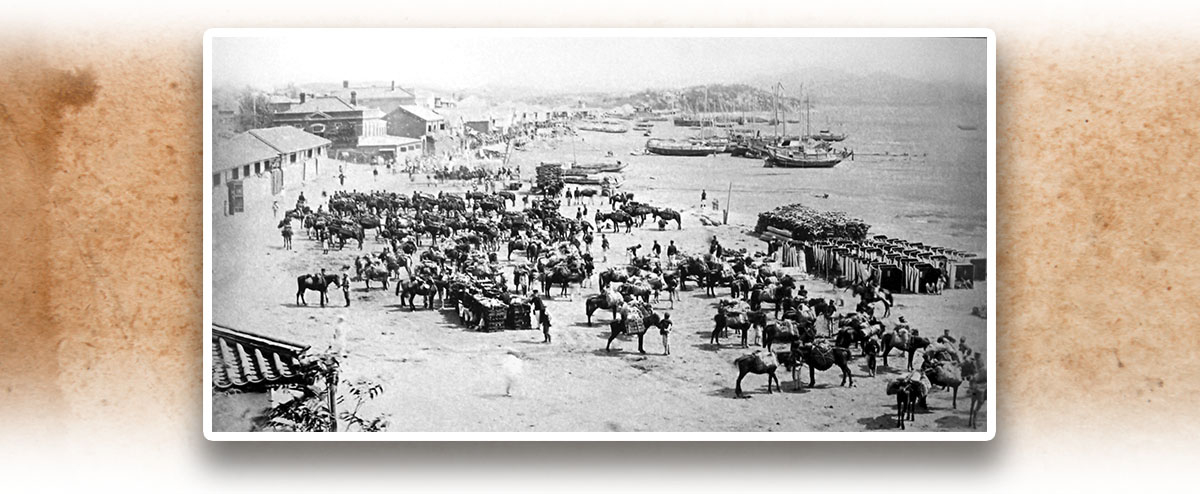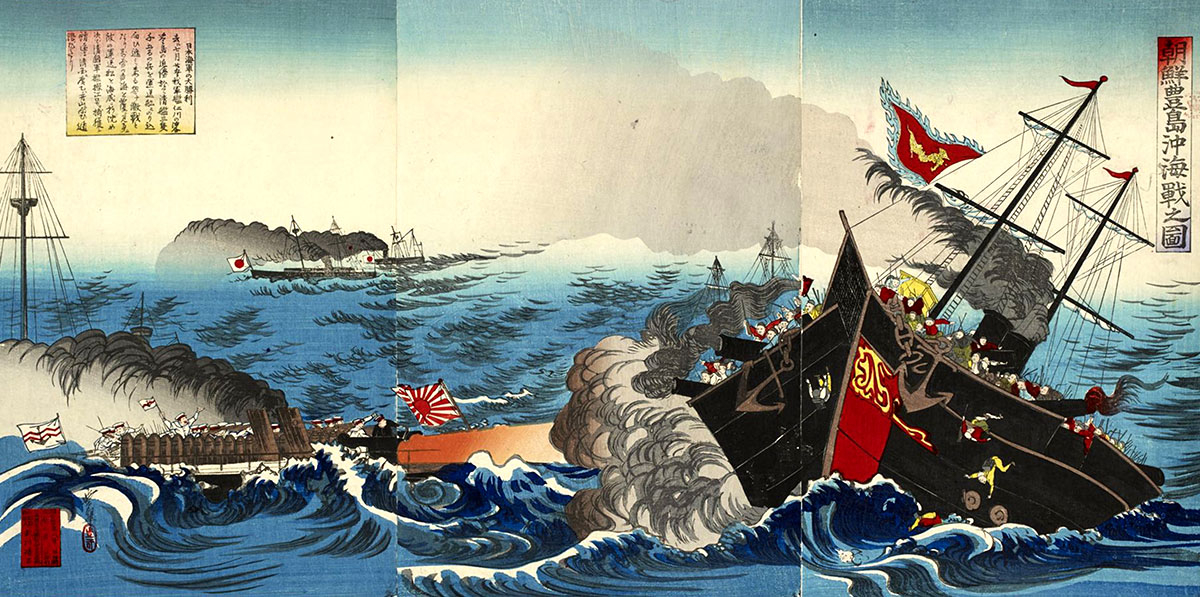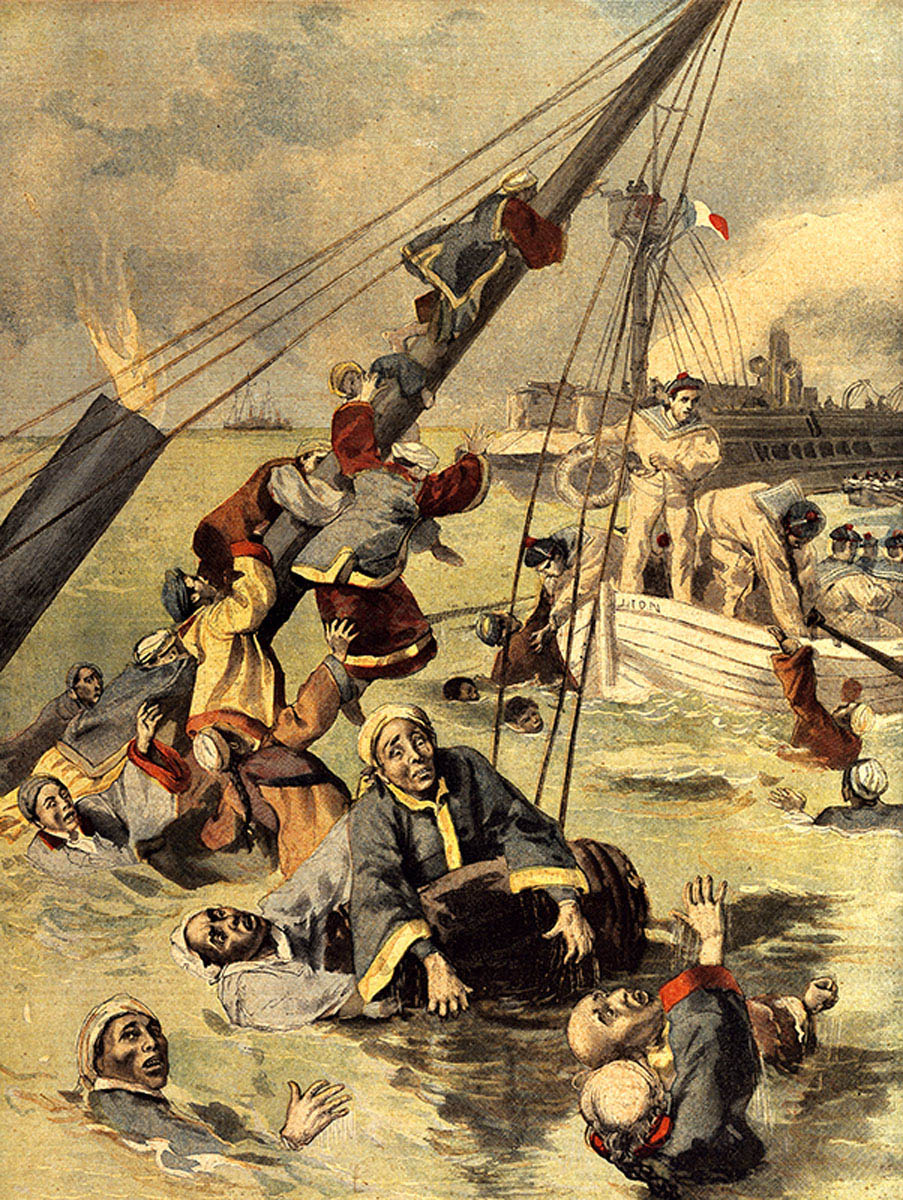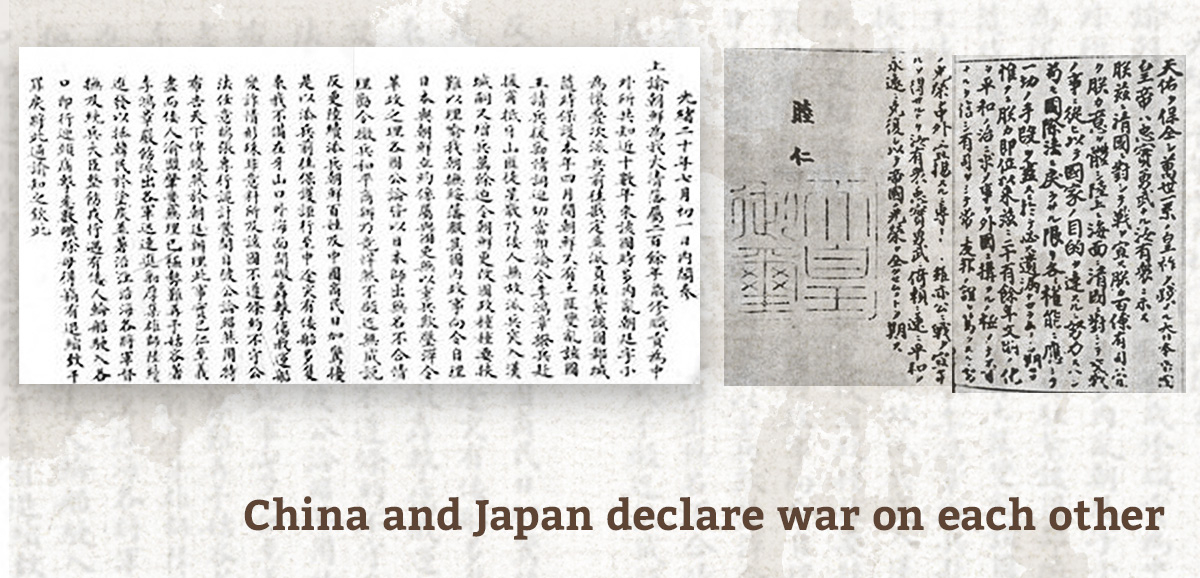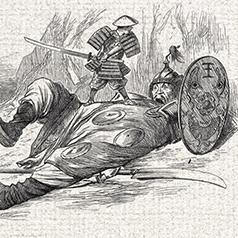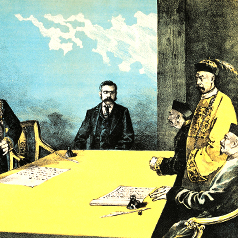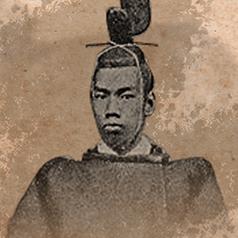Upon the Meiji Restoration, Japan planned to invade China via Korea, a Chinese dependency. As early as 1876, Japan declared Korea an autonomous state through the Treaty of Ganghwa and rejected the Qing’s sovereignty. As Japan continued to target Korea, troops were deployed on multiple occasions to force China into giving Japan authority over Korea. Japan was militarizing rapidly and expanding its army and navy. Thus it soon became the dominant military power in East Asia. China grossly underestimated what it still called a small country.
In 1894, troops were deployed by China and Japan simultaneously to help Korea suppress the Donghak Revolt. After defeating the rebels, Japan did not withdraw its troops and forced Korea to cut ties with China. On July 25, without a declaration of war, Japanese naval forces sank the Kowshing, a Chinese troop carrier, in the waters of Pungdo and launched an attack on the Qing army stationed in Asan. On August 1, the First Sino-Japanese War was officially declared.
|
|
Why is the First Sino-Japanese War regarded as a clash between two modernizing states? |
|
|
See answer below. |
Pictured is the Japanese naval fleet in 1894. The Japanese had built a modern military force after over twenty years of Meiji Restoration inspired modernization, and were ready to take on China. Japan pushed ahead with its plan to invade China via Korea and actively sought an opportunity to instigate war.
Prior to the Sino-Japanese War, Korea’s state administration had been plagued by long-standing problems. King Gojong reigned in name only and the country was first run by his father Daewongun (left), then by his spouse Queen Min (right), and the constant strife between factions headed by these two powers behind the throne led to political instability. This, along with rampant corruption, fueled growing poverty and social discontent presenting Japan with the opportunity to interfere.
In early 1894, a large-scale rebellion broke out in Korea, prompting China and Japan to dispatch their armies there simultaneously to support the ruling Korean party. It was this incident that led to the First Sino-Japanese War. The picture features Jeon Bong-jun, rebel leader of the Donghak Revolt, and his followers. Jeon Bong-jun is the middle figure holding a sword in his left hand and a scroll in his right.
The Donghak Sect, which inspired the peasant rebellion, called for a crusade to “help the nation and provide security for the people, expel the Japanese and Westerners, and exterminate the rich and powerful.” The rebellion it sparked was called the Peasant Revolt 1893-1895. Other names included the Peasant Revolt of 1894, as major incidents occurred during 1894, or the Donghak Revolt.
The Qing army sailed for Korea, then China’s tributary state, to help quell the Donghak Revolt. In June 1894, the Qing court sent Ye Zhichao (葉志超), Commander-in-Chief of Zhili (直隸提督), to Asan, Korea with 2,000 troops, the majority of whom were from the Huai Army founded by Li Hongzhang (李鴻章).
In June 1894, the Japanese army landed in Incheon just as China dispatched its troops. The Japanese successively deployed over 10,000 troops to Korea, capturing strategic locations from Incheon to Seoul and gradually surrounded the Qing forces stationed in Asan.
In as early as 1884, Japan had supported Korea’s pro-Japan Gaehwadang (Enlightenment Party) by mobilizing Japanese troops to assist with their coup to seize power. However, they were thwarted by Qing troops stationed in Korea under the command of General Yuan Shikai (袁世凱). The incident led to the signing of the 1885 Convention of Tientsin (Convention of Tianjin, 中日天津條約) by Li Hongzhang and Itō Hirobumi, who represented China and Japan respectively. According to the treaty, the two powers were to pull their troops out of Korea and pledge to provide prior notification to the other if troops were to be sent to Korea in the future. Upon completion of any mission in Korea, they were to withdraw immediately, leaving no troops behind to occupy Korean territory. Korea was a tributary state of China, these terms were tantamount to acknowledging Japan’s right to interfere in Korean affairs and was a serious diplomatic blunder by the Qing court. When the Donghak Revolt erupted in 1894, Japan swiftly set up its Imperial General Headquarters in Hiroshima in June, and began to make preparations for the forthcoming war. They used the Convention of Tianjin to justify their deployment of troops into Korea, made sure their forces outnumbered China’s, and refused to withdraw after the suppression of the rebellion, thus attempting to provoke a war with China. Pre-empted both diplomatically and militarily by Japan’s carefully laid schemes from the very start, the Qing court could only react passively to everything that followed.
Li Hongzhang was responsible for handling the crisis. Initially he was keen on resolving the conflict diplomatically, but had to send more troops post-haste when the situation escalated. In 1894, the Qing military chartered the Kowshing, a British merchant vessel, to ferry reinforcement troops to Korea. It was sunk by Japanese warships near Pungdo Island off the coast of Asan. This picture depicts the Kowshing ablaze and sinking after Japanese bombardment.
More than 1,000 troops and crew members were onboard the Kowshing. About 200 were rescued but over 800
people perished. The picture shows the rescue efforts of the French warships nearby.
As tension rose on the Korean Peninsula, particularly with the involvement of a chartered British merchant ship during the Sino-Japanese conflict, foreign naval fleets in the Far East were put on high alert. Both the British and French fleets moved in when the Battle of Pungdo broke out. The British captain of the Kowshing was rescued by the Japanese while surviving Chinese troops were mainly assisted by the French.
The Battle of Asan illustrated by a Japanese artist. On July 25, 1894, just as a naval battle was waged in Pungdo, Japanese infantry stationed in Korea launched a surprise attack on the Qing army at Asan and defeated them on 26 July. The Qing forces retreated to Seonghwan.
Battle of Seonghwan illustrated by a Japanese artist. On July 29, 1894, the Japanese army attacked Seonghwan. The Qing army suffered another defeat and retreated to Pyongyang.
On August 1, 1894, China and Japan officially declared war, leading to the outbreak of the First Sino-Japanese War.
|
|
Why is the First Sino-Japanese War regarded as a clash between two modernizing states? |
|
|
Although their situations were somewhat different, both China and Japan faced invasion by foreign powers, in 1840 and 1853 respectively, and were forced to sign unequal treaties. Later, both China and Japan attempted to modernize through reforms. In China, it was through the Self-Strengthening Movement starting in 1860 and in Japan, the Meiji Restoration starting in 1868. Both countries strived to learn from the US and Europe in military, industrial, economic and cultural terms placing particular emphasis on building a modern army and navy. The outcome of this war is a reflection of Japan’s greater success in achieving reform. |
Source of most photos used in this feature piece: Fotoe (pictures 1-6, 8, 9), Visual China Group (pictures 2, 7), misc. photo sources.




